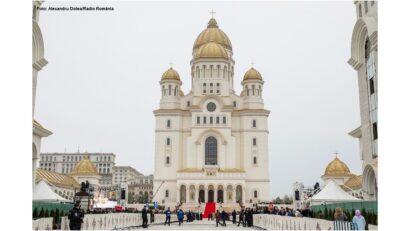Romanians and their Cultural Preferences
A look at Romanians and their cultural preferences

Christine Leșcu, 20.05.2015, 13:09
At a first glace the latest barometer on cultural consumption – released by the Ministry of Culture – isnt flattering in the least: almost 63% of the Romanians never go to the theatre, 39% of them read no books in 2014, while 79% didnt visit libraries. Nevertheless, both the authors of the aforementioned survey, researchers with the National Institute for Research and Cultural Training, as well as independent experts, believe the survey needs to be contextualized. Andrei Craciun, head of the Research Department of the aforementioned institute, told us the survey was conducted on two types of respondents: highly cultured people and consumers of mass culture.
“Romanians are culture consumers, but it depends on what kind of culture we are talking about. Often we think of elements defining highbrow culture, such as opera shows, theatres or museums. But in our survey, weve granted culture an extended meaning, which includes outdoor activities and popular musical genres…it very much depends on the area you are focusing on as well; rural or urban, but all in all you cannot conclude that Romanians arent culture consumers.
In turn, literary critic and historian Ion Bogdan Lefter has noticed the mixture of the two types, highbrow and mass culture, which could be found in other societies as well.
“If we expect that in a country like Romania, cultural consumption to stay at high levels – lets say everybody reads a book a month or goes to theatre, museums – then surveys are going to be a big letdown. But if we think they are just like in other countries, staying within the line of normality around the world, we see they are exactly like their fellow human beings. The survey, which produced little surprise, points to a normal society with cultured and uncultured people, with rich and have-nots. In societies like these, cultural consumption is only one of many types of consumption.
One of the conclusions of the research refers to the emergence of a type of cultural consumption described as the omnivorous type, including hybrid cultural practices for the sake of entertainment. For instance, show or concert attendance is often associated with other types of activities, says Andrei Craciun:
“The mall in itself is very popular, both among culture consumers and film goers. Its also a social networking place. Theatre plays re now being staged not only in conventional contexts, but also in alternate spaces, which appeals to the younger generation, seeking a wider variety of experiences, including spending time with friends.
Under these circumstances a slight rise in play and museum attendance has been noticed of late. In Bucharest, 63% of the Romanians go to the theatre on a monthly basis and 62% of them have visited a history museum in the past year. History museums, followed by museums of natural sciences are at the top of the Romanians preferences. Festivals are highly appreciated, with 48% of the Romanians attending film and music festivals and 43% of them going to entertainment and music shows. In the same line, the number of respondents who say they went to see at least a theatre performance, an opera show or a classical music concert has been constantly on the rise in recent years. However, most of these spectators see only a small number of shows belonging to a restricted genre and dont take a keen interest in the artistic act. Consequently, we are witnessing a process of cultural literacy rather than enhancing cultural loyalty to a certain type of “high culture. Andrei Craciun has more on other preferences of the Romanians.
“Overall, the favourite genre of music is traditional, folk music. This is followed by pop music, such as pop-dance and other genres with a very strong media impact. As regards ‘manele (a Balkan music-derived genre, performed mostly by ethnic Roma), they are slightly decreasing in popularity. They reached a boom between 2007 and 2009, but it is no longer the case. Comedies were among the first choices made by Romanians when it came to theatre performances, followed by multi-media shows.
Reading, on the other hand, seems to lose ground: in 2014, 39% of the Romanians said they didnt read a book, 18% of them read on a daily basis, 16% read once or twice a month and 14% once or twice a year. If we make a simple addition, we come to the conclusion that the percentage of those who read seems to be higher than that of those who dont, a fact contested by publishers and considered to be an interpretation error. Mihai Mitrica, director executive of the Romanian Publishers Federation tells us why:
“This barometer comes to contradict all earlier sociological observations, including an Eurobarometer made public just a year ago. For instance, the survey issued by the Culture Ministry shows that one in two Romanians reads a book per month. This is impossible in the context in which only one year ago, the same percentage of the Romanians, nearly half of them, were reading a book a year. Such an increase in the number of book consumers can be explained only by an error in interpreting data. The book market has stagnated for years around the figure of 100 million Euros, including the traditional market, which stands at 60 million Euros and the textbooks and kiosk volumes market which stands at 35-40 million Euros.
Furthermore, the diversity of cultural choices as well as the increased access to culture by means of the Internet and digital technologies change not only our perception of “high culture, but also the way we used to appreciate reading in the past.






























